Family: Pergidae
Family common name: pergid sawflies
Subfamily: Acordulecerinae
Genus: Acordulecera Say, 1836
Subgenera: none
Pergidae are a diverse, mostly tropical family. Only one genus of this large family, Acordulecera, is endemicendemic:
both native and unique to a particular region
to North America north of Mexico (Goulet 1992Goulet 1992:
Goulet H. 1992. The genera and subgenera of the sawflies of Canada and Alaska: Hymenoptera. Symphyta. The insects and arachnids of Canada. Part 20. Agriculture Canada Publication.).
Acordulecera is a speciosespeciose:
describing a taxon that includes a high number of species
genus of small sawflies. They are stout and generally 4 mm or less in length. As larvaelarva:
the immature stage of holometabolous insects
 , they feed on broadleaf deciduousdeciduous:
, they feed on broadleaf deciduousdeciduous:
describing a tree that drops its foliage once a year and then re-grows it; often senescence occurs before winter and re-growth occurs in the spring
trees. This genus is not well-studied, and several species remain undescribed (Smith 2006aSmith 2006a:
Smith DR. 2006a. Checklist of the Pergidae (Hymenoptera: Symphyta) of the Western Hempisphere, with a new genus and two species. Recent sawfly research: synthesis and prospects: 1-3., Smith 2010Smith 2010:
Smith DR. 2010. Five new Acordulecera Say (Hymenoptera: Pergidae) from Arizona and California, the first records of the family from southwestern United States. Proceedings of the Entomological Society of Washington 112 (3): 410-422. https://doi.org/10.4289/0013-8797.112.3.410).
There are 55 described species worldwide restricted to the Western Hemisphere, with the greatest species richness in tropical South America. Nine species occur in North America (Smith 2006aSmith 2006a:
Smith DR. 2006a. Checklist of the Pergidae (Hymenoptera: Symphyta) of the Western Hempisphere, with a new genus and two species. Recent sawfly research: synthesis and prospects: 1-3., Smith 2010Smith 2010:
Smith DR. 2010. Five new Acordulecera Say (Hymenoptera: Pergidae) from Arizona and California, the first records of the family from southwestern United States. Proceedings of the Entomological Society of Washington 112 (3): 410-422. https://doi.org/10.4289/0013-8797.112.3.410, Taeger et al. 2010Taeger et al. 2010:
Taeger A, Blank SM, and Liston AD. 2010. World Catalog of Symphyta (Hymenoptera). Zootaxa 2580: 1-1064.).
A preliminary key to species of North American Acordulecera is included in Smith 2010Smith 2010:
Smith DR. 2010. Five new Acordulecera Say (Hymenoptera: Pergidae) from Arizona and California, the first records of the family from southwestern United States. Proceedings of the Entomological Society of Washington 112 (3): 410-422. https://doi.org/10.4289/0013-8797.112.3.410.
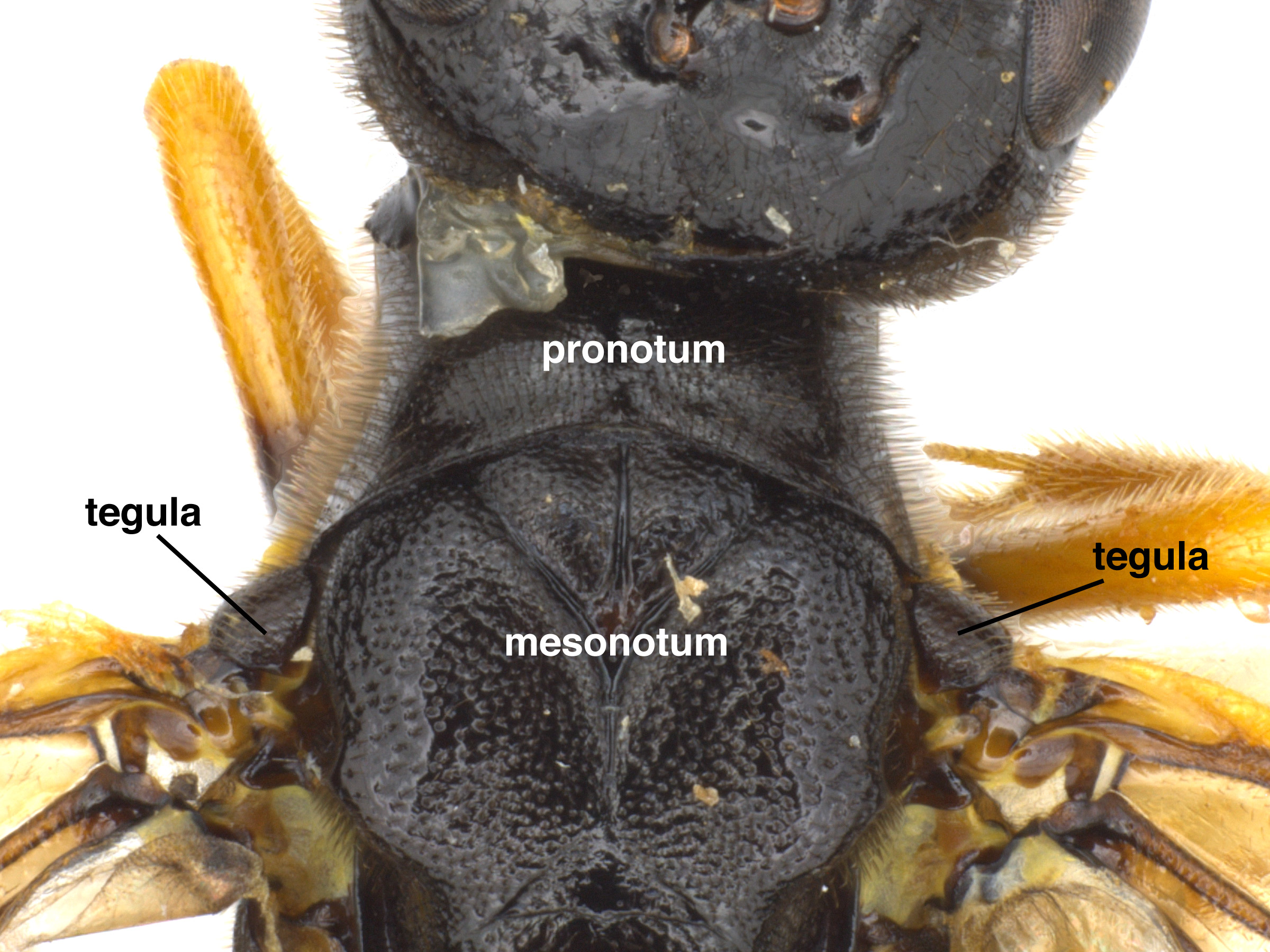 strongly constricted as seen from above (Goulet 1992Goulet 1992:
strongly constricted as seen from above (Goulet 1992Goulet 1992: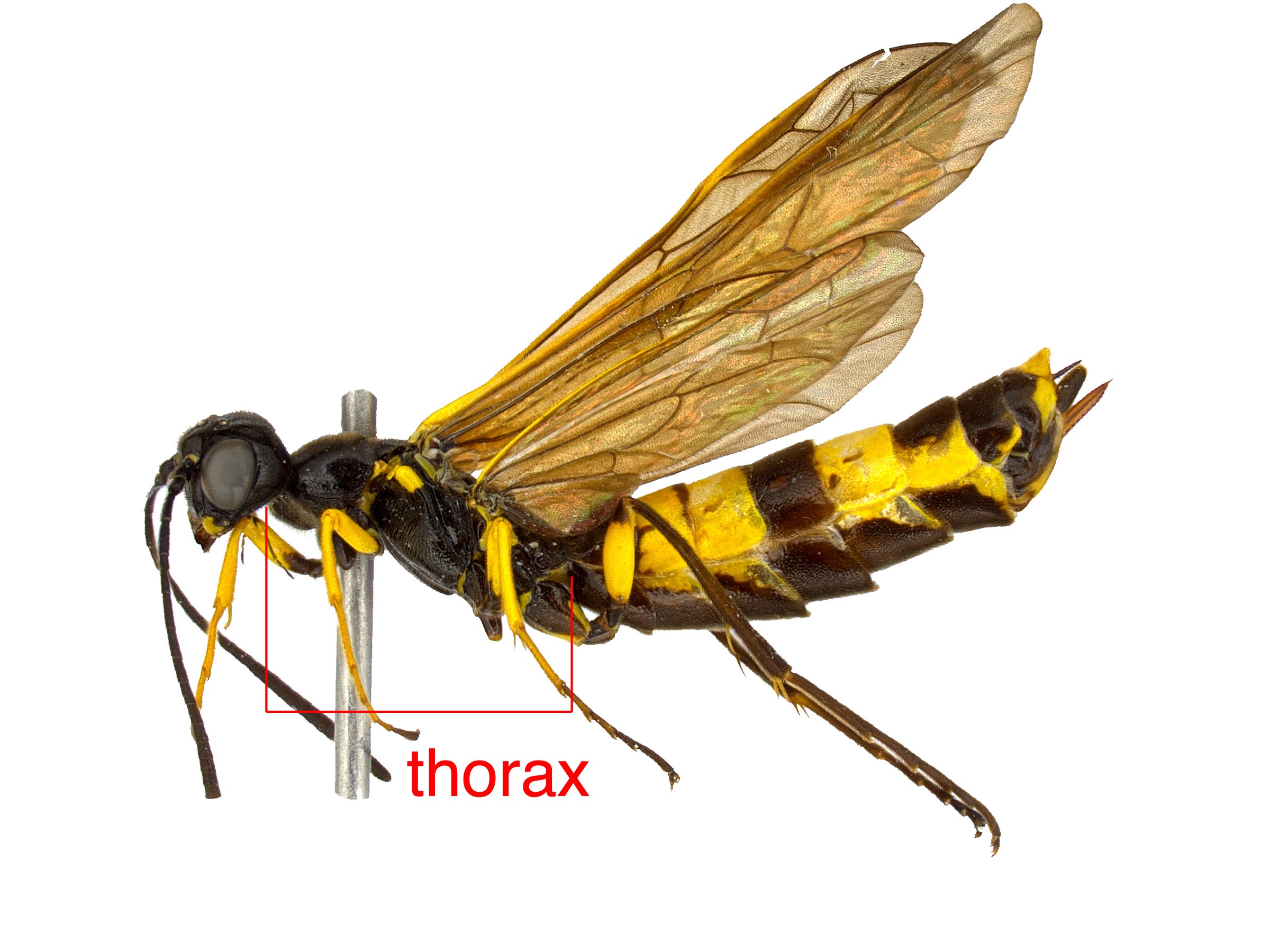 , no “neck” (Goulet 1992Goulet 1992:
, no “neck” (Goulet 1992Goulet 1992: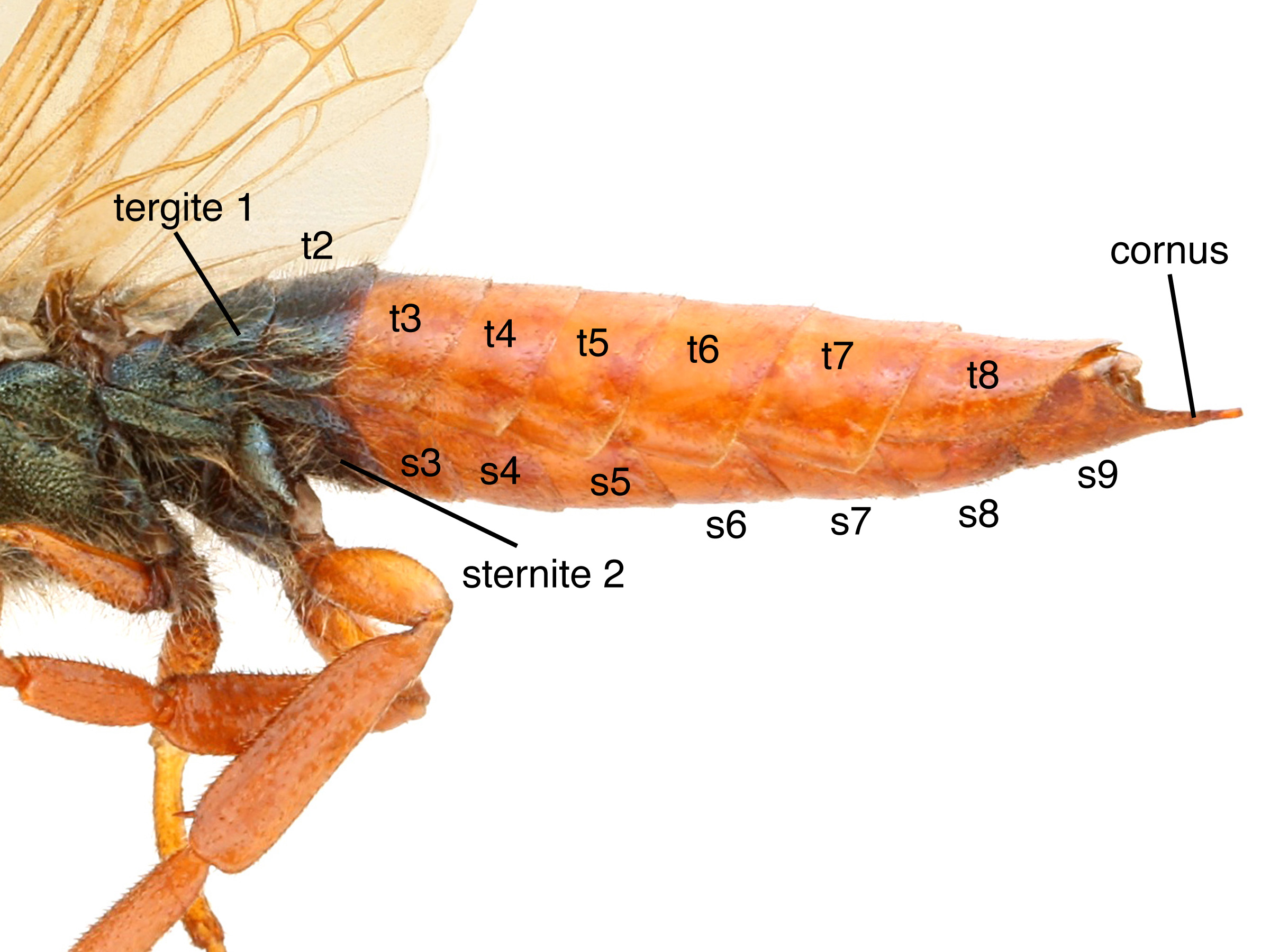 1 fused to metapleuronmetapleuron:
1 fused to metapleuronmetapleuron: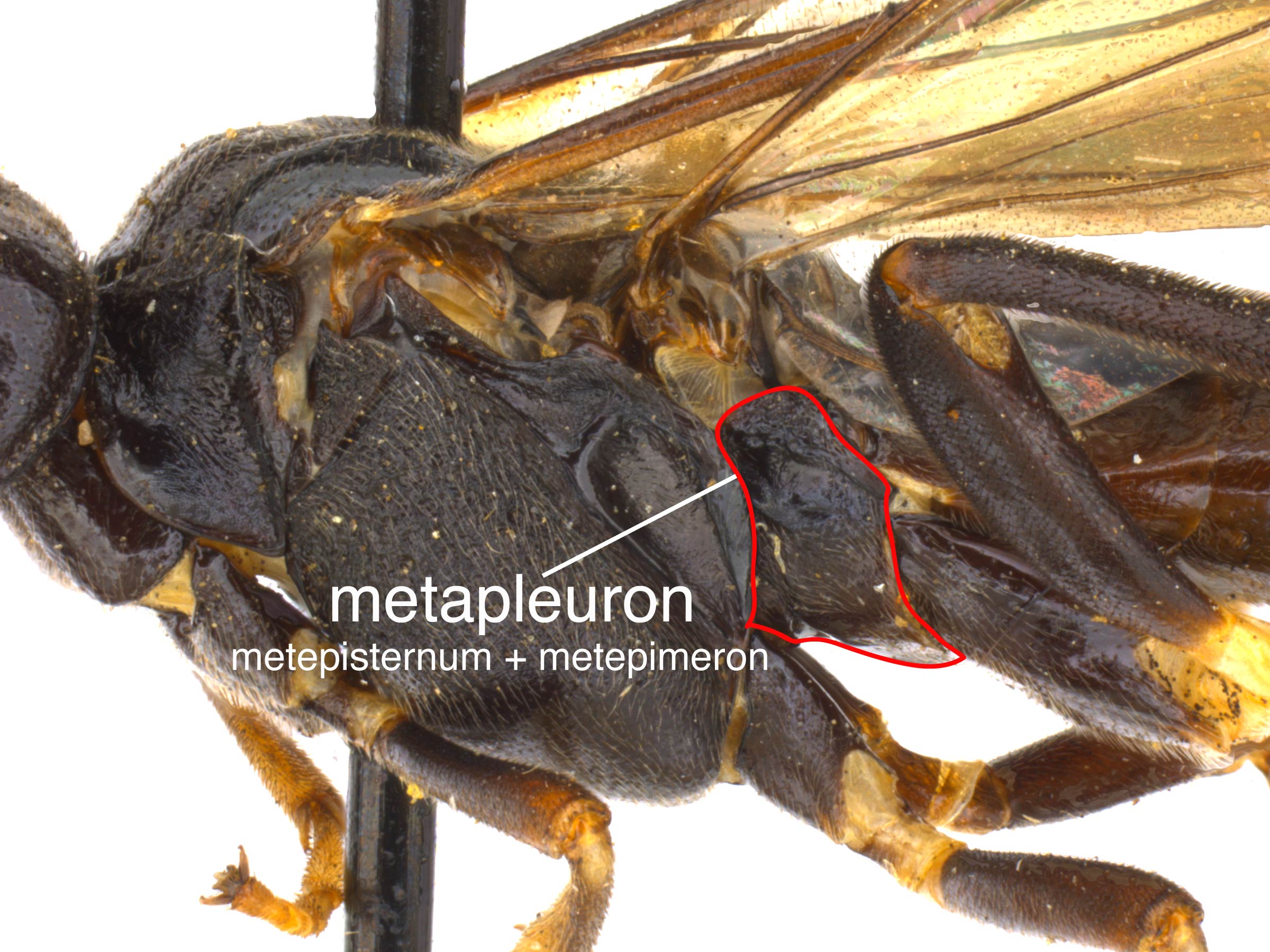 and extending to hind coxaecoxa:
and extending to hind coxaecoxa: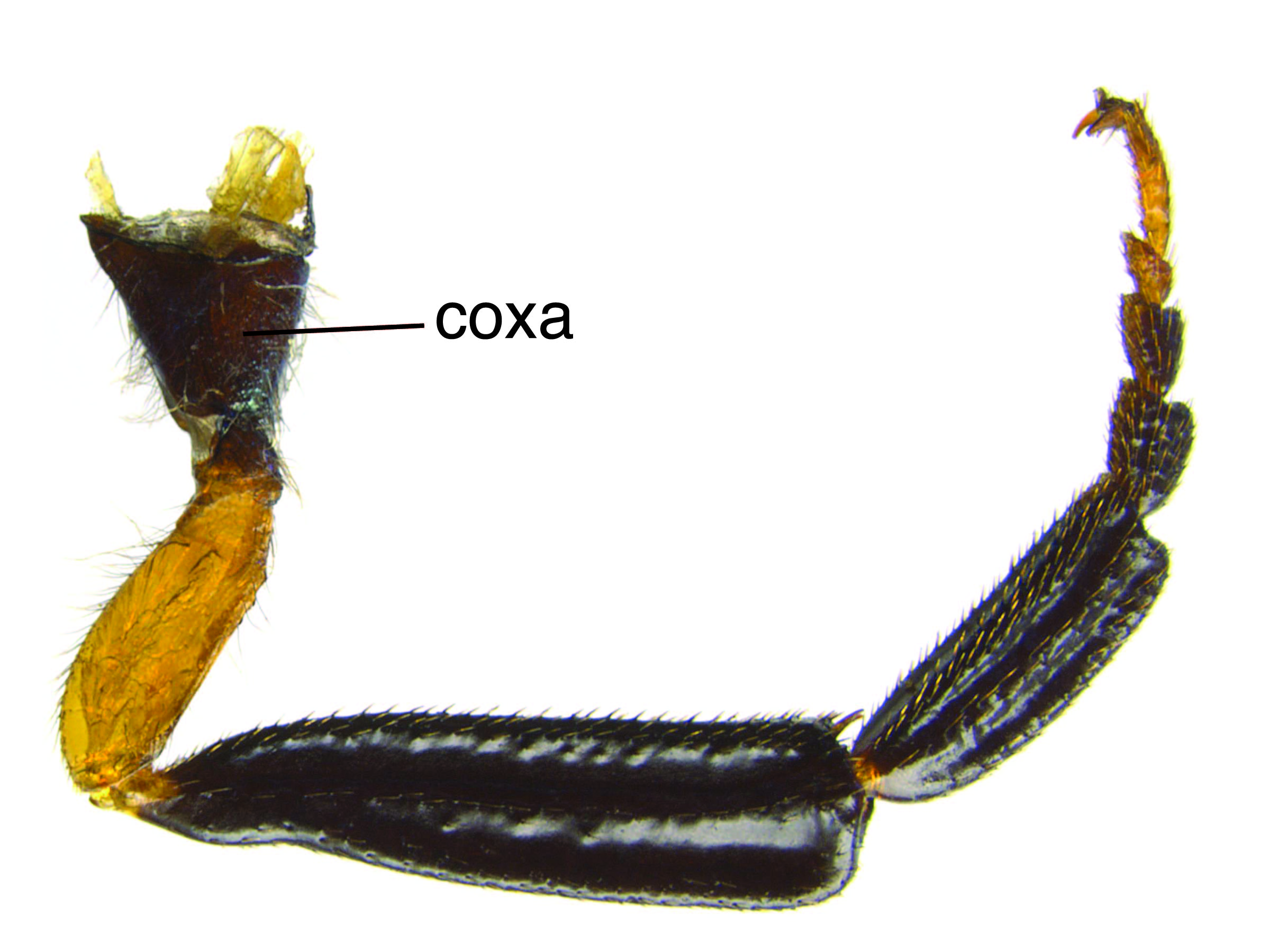 (Goulet 1992Goulet 1992:
(Goulet 1992Goulet 1992: with 2 preapicalpreapical:
with 2 preapicalpreapical: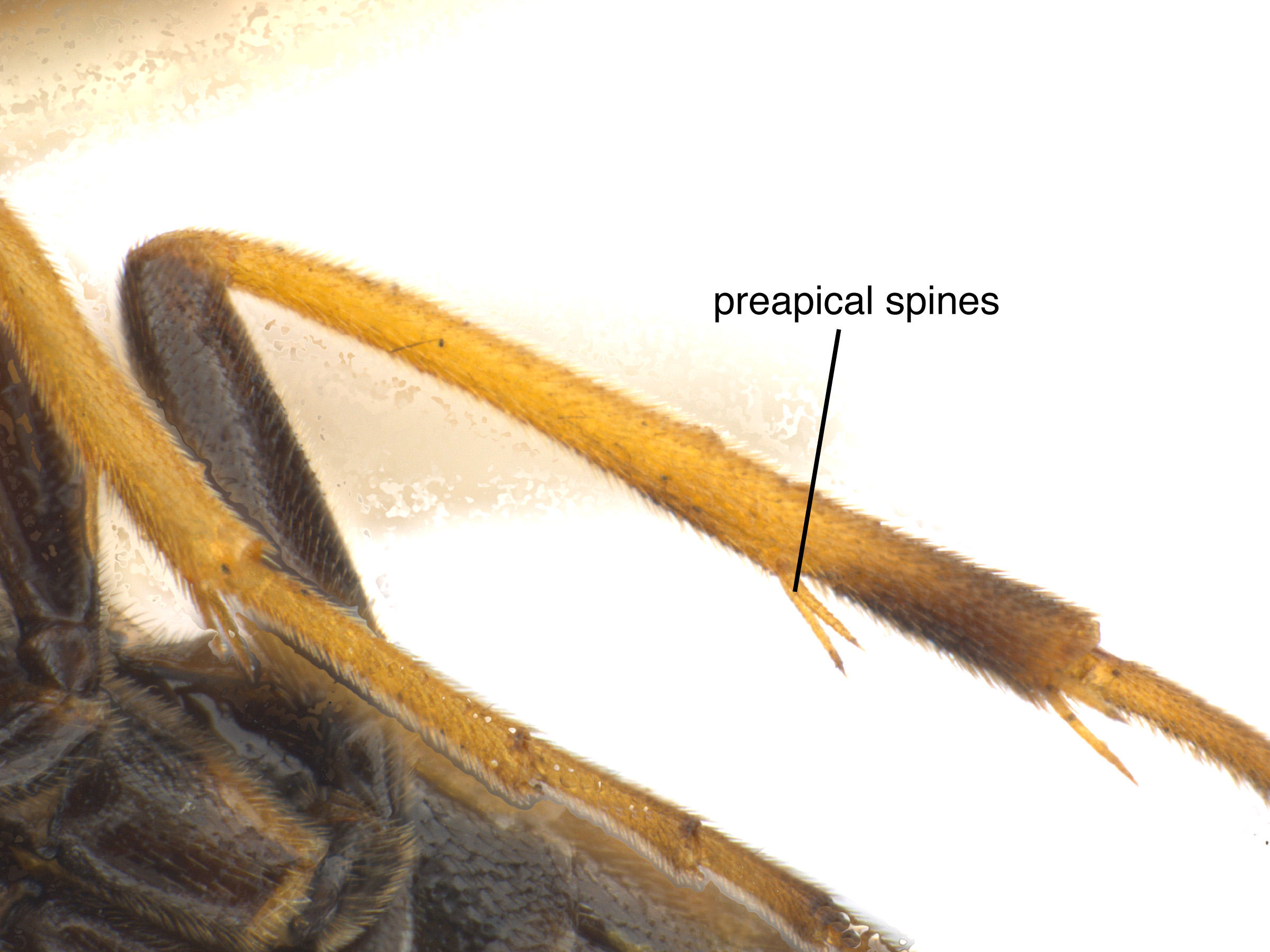 spurs (Goulet 1992Goulet 1992:
spurs (Goulet 1992Goulet 1992: (Goulet 1992Goulet 1992:
(Goulet 1992Goulet 1992:The Pergidae can be distinguished from other families by the fused tergumtergum:
the dorsal area of the abdomen
 , the lack of fore wingfore wing:
, the lack of fore wingfore wing:
the anterior wing of each pair of wings; usually the largest wing of the pair
 vein 2r, and the lack of hind winghind wing:
vein 2r, and the lack of hind winghind wing:
the posterior wing of each pair of wings
 cellcell:
cellcell:
1. a membranous area of the wing between veins, 2. a small cavity or closed space
 A. The family can be distinguished from Argidae by of the number of antennal segments. Acordulecera is easy to recognize with its small size and 6-segmented antennaeantenna:
A. The family can be distinguished from Argidae by of the number of antennal segments. Acordulecera is easy to recognize with its small size and 6-segmented antennaeantenna:
the sensory organ emerging from the front of the head, usually between the compound eyes and above the clypeus; includes the flagellum, scape and pedicel
 (Goulet 1992Goulet 1992:
(Goulet 1992Goulet 1992:
Goulet H. 1992. The genera and subgenera of the sawflies of Canada and Alaska: Hymenoptera. Symphyta. The insects and arachnids of Canada. Part 20. Agriculture Canada Publication.).
none
Hosts of the eastern species of Acordulecera include Quercus (oak), Castanea (chestnut), Carya (hickory), and Juglans (walnut) (Smith 2006aSmith 2006a:
Smith DR. 2006a. Checklist of the Pergidae (Hymenoptera: Symphyta) of the Western Hempisphere, with a new genus and two species. Recent sawfly research: synthesis and prospects: 1-3., Smith 2010Smith 2010:
Smith DR. 2010. Five new Acordulecera Say (Hymenoptera: Pergidae) from Arizona and California, the first records of the family from southwestern United States. Proceedings of the Entomological Society of Washington 112 (3): 410-422. https://doi.org/10.4289/0013-8797.112.3.410).
Larvae are caterpillar-like, external leaf feeders. The biology of this genus is not well described (Smith 1993Smith 1993:
Smith DR. 1993. Systematics, life history, and distribution of sawflies. Pp. 3-32. In: Wagner MR and Raffa KF, eds. Sawfly Life History Adaptations to Woody Plants. University of Minnesota Academic Press. 581 pp.).
World: All species of Acordulecera occur in the Americas, as far south as Bolivia and Brazil in South America (Smith 2006aSmith 2006a:
Smith DR. 2006a. Checklist of the Pergidae (Hymenoptera: Symphyta) of the Western Hempisphere, with a new genus and two species. Recent sawfly research: synthesis and prospects: 1-3., Taeger et al. 2010Taeger et al. 2010:
Taeger A, Blank SM, and Liston AD. 2010. World Catalog of Symphyta (Hymenoptera). Zootaxa 2580: 1-1064.).
North America: In the northern part of its range, Acordulecera occurs as far north as southeastern Canada through the eastern United States and west to Arizona and California. The genus is also found throughout Mexico and Central America, and Dominica, Montserrat, and St. Vincent in the Caribbean (Smith 2006aSmith 2006a:
Smith DR. 2006a. Checklist of the Pergidae (Hymenoptera: Symphyta) of the Western Hempisphere, with a new genus and two species. Recent sawfly research: synthesis and prospects: 1-3., Smith 2010Smith 2010:
Smith DR. 2010. Five new Acordulecera Say (Hymenoptera: Pergidae) from Arizona and California, the first records of the family from southwestern United States. Proceedings of the Entomological Society of Washington 112 (3): 410-422. https://doi.org/10.4289/0013-8797.112.3.410).
Map data from: GBIF.org (26 June 2019) GBIF Occurrence Download Acordulecera
Details about data used for maps can be found here.